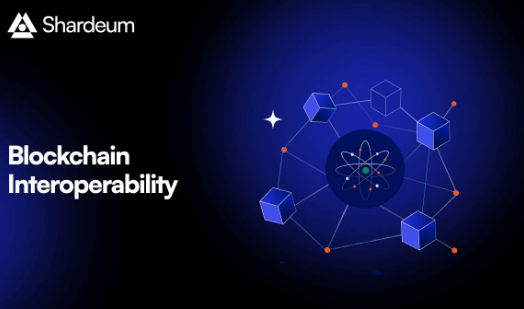Blockchain interoperability enables decentralized networks to communicate, share data, and transfer assets across different chains – a critical capability as 84% of organizations now operate in multi-chain environments For developers, understanding this frontier unlocks opportunities to build unified applications that transcend individual blockchain limitations.
What Is Blockchain Interoperability?
Blockchain interoperability allows separate networks like Ethereum and Cosmos to:
-
Exchange messages/data through cross-chain communication protocols
-
Transfer assets via bridges and wrapped tokens
-
Maintain shared states through modular architectures
Without interoperability, chains operate like isolated computers without internet connectivity. The email analogy helps conceptualize this: just as Gmail users can message Yahoo accounts, interoperable chains enable transactions between disparate networks
Why Developers Should Care
| Key Consideration | Impact on Development |
|---|---|
| User Experience | Single interface for multi-chain interactions |
| Liquidity Access | Aggregate assets from multiple ecosystems |
| Technical Debt | Avoid maintaining separate codebases per chain |
| Innovation | Combine unique features from different networks |
Core Mechanisms
Cross-Chain Messaging Protocols enable smart contracts to:
-
Read external chain data (e.g., price feeds)
-
Trigger actions on foreign chains
Implementation Models:
-
Bridges: Lock-and-mint systems for asset transfers (e.g., Wrapped BTC)
-
Relay Chains: Central coordination hubs (Polkadot’s Relay Chain)
-
IBC Protocol: Cosmos’ standardized communication layer
-
Sidechains: Customizable parallel chains with two-way pegging
Developer Challenges
-
Security Risks: Over $2.8B lost to bridge exploits
-
Consensus Conflicts: Different finality mechanisms across chains
-
Data Formatting: Varied transaction structures and VM environments
-
Oracle Integration: Reliable external data feeds remain complex
Top Interoperability Tools
| Tool | Type | Key Feature | Use Case |
|---|---|---|---|
| Axelar | Network | Proof-of-Stake API | Cross-chain dApp development |
| Holograph | SDK | Asset “beaming” technology | NFT interoperability |
| deBridge | Framework | Cross-chain smart contract composition | Multi-chain DeFi |
| IBC Protocol | Standard | Tendermint-based validation | Cosmos ecosystem apps |
| Chainlink CCIP | Oracle | Decentralized message routing | Enterprise-grade bridges |
Implementation Checklist
For developers integrating interoperability:
-
Assess finality requirements – Confirm transaction irreversibility thresholds
-
Choose verification model – Light clients vs. optimistic vs. zero-knowledge proofs
-
Implement error handling – Cross-chain transaction rollback mechanisms
-
Monitor bridge risks – Use audited contracts with circuit breakers
The future points toward blockchain abstraction layers where developers interact with a unified API spanning all chains. As Layer 2 solutions and modular architectures proliferate, interoperability will shift from optional to essential infrastructure – the TCP/IP of Web. Developers who master these patterns today will lead tomorrow’s multi-chain revolution.
Also Read :
